Perhaps you’re familiar with having a “bad hair day.” For birds, “bad feather days” – what we call molting – are a part of life. And those days are not easy. In fact, it can make birds downright grumpy. Seriously.
Feathers are a bird’s defining feature. They impart the ability to fly, provide weatherproof warmth and give birds their dashing good looks.
But feathers wear out quickly and in order to maintain peak performance, birds molt (replace old feathers with new feathers) at least once a year.
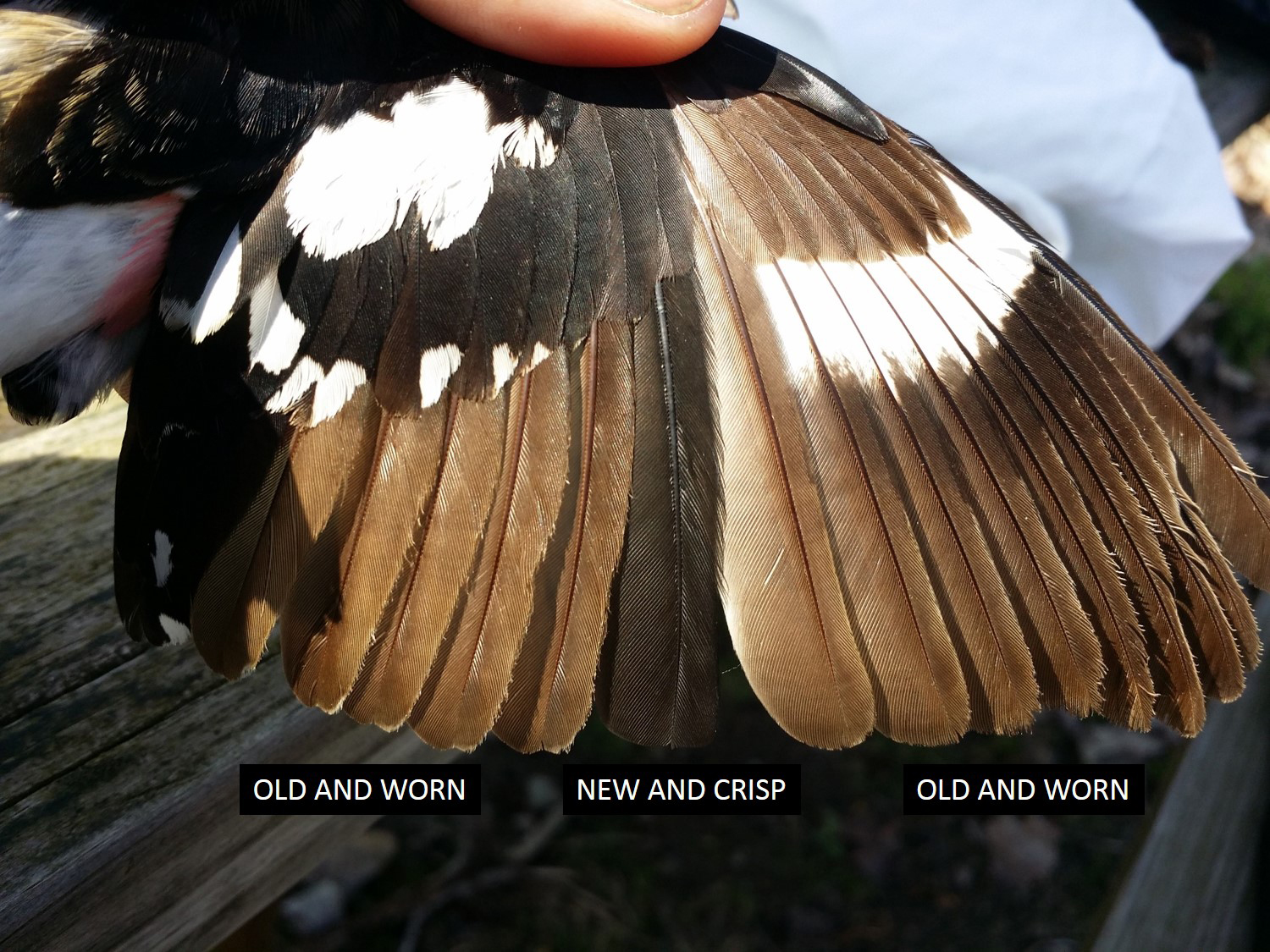
Observations of pet bird owners as well as those of scientists tell us that molting is not an easy time for birds.
While wearing a motley array of old, yet-to-grow and new feathers that reduces flight performance and the ability to stay warm and dry, a bird must nonetheless find a high-quality food supply to fuel feather growth.
To add insult to injury, molting can also make a bird look quite homely.
I learned something about how it feels to be a molting bird from the book Arnie the Darling Starling by Margarete Corbo. It’s a memoir of the author’s time with a starling that she raised from a nestling after she found it in her garden and was unable to return it to its nest.
The starling had free range of Corbo’s house and learned a wide vocal repertoire of words and songs. But when it came time for Arnie’s “preformative molt” (the transition from juvenile to adult plumage), his personality changed completely.
For one, he stopped talking.
It reminded the author of “a brilliant orator suddenly reduced by a catastrophic accident to the gibberish of infancy.”
Arnie also lost his “sweet disposition,” becoming irritable and aggressive. Corbo writes, “To those of us who knew him, it was as drastic a change as Dr. Jekyll and Mr. Hyde.”
Corbo concluded that the “molt is a time of misery.”
But eventually the starling re-found his voice, regained his exuberant personality and entered his second year of life with a beautiful new set of adult feathers.
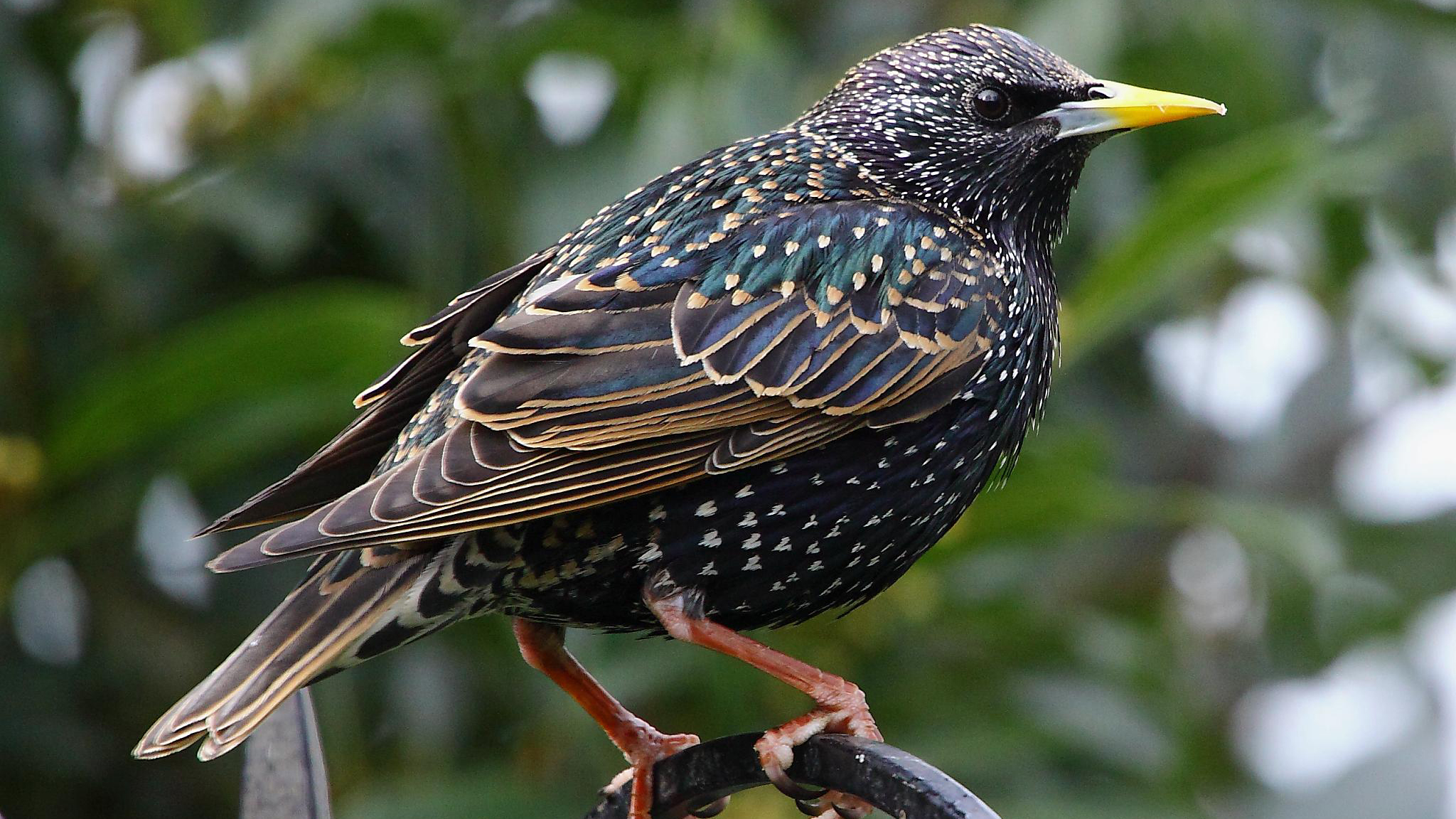
Starlings complete their molt in about three months. Depending on the species, a complete molt can take as little as a month or last up to 6 months or even longer.
Personality changes during molt are written about frequently on pet bird and backyard chicken internet forums because it comes as a shock to owners. Without prior knowledge, many owners’ first thought is that their birds are sick.
Bird owners know that the “mood” or “personality” of their bird — whether it be a chicken, parrot or darling starling — can change dramatically during molt. The birds often retreat to quiet spaces, reduce their activity and just want to be left alone.
Personal relationships between people and birds is a helpful window into this phenomenon.
Science is not well-equipped to measure a bird’s (or anyone’s) discomfort levels. Even with the benefit of language we have trouble conveying to others what our own particular feelings of pain or discomfort are like. The best a doctor can do is to ask you to “rate your pain level from one to ten.”
Although it may be impossible to discern personality changes in wild birds during molt, it is something to consider: Do all the wild birds around us go through what Arnie the starling went though? Are they miserable during molt? And how does this misery affect their behavior?
The time between nesting and migrating is typically when birds molt and this period largely falls through the scientific cracks. Many bird studies happen during the nesting season when individuals are attached to their nesting territory. They sing and display conspicuously and are thus easy to find and re-find (and study!).
Likewise, there are numerous studies of migrating birds. Although any one bird may not be seen again after it passes through a location, the opportunity to observe many birds of many species during migration allows for investigation of broad patterns.
But inconveniently for scientists, songbirds at molting time are difficult to find. During molt, birds wander away from their defended nesting territory and stop singing. They may become as discreet as the pet birds we’ve heard about, with much reduced activity levels.
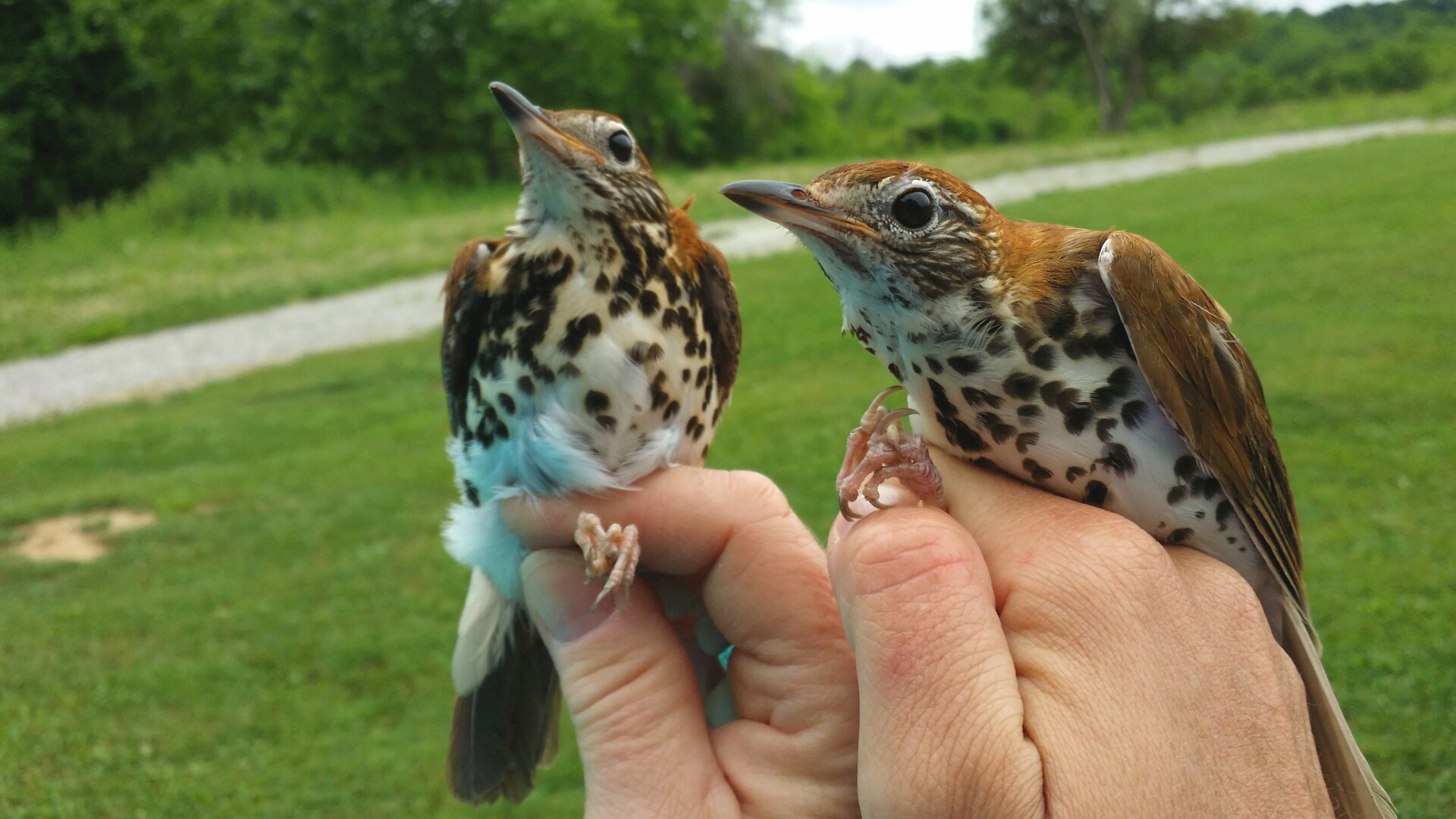
A study of wood thrush in Virginia led by Jorge Vega Rivera discovered just how discreet birds can be during molt. Rivera’s team overcame the challenges of observing quiet wandering birds by tracking them with radio tags which revealed the birds’ locations.
But even with enhanced tracking ability, the researchers noted that during the molting stage, wood thrush were “very difficult to observe and almost impossible to catch.”
The birds spent most of their molting time on the ground in dense patches of vegetation and made very restricted movements.
In one observation they saw a female thrush attempting to fly, but “she fell to the ground, and disappeared, hopping and flapping her wings.
Elizabeth Gow, who led another tracking study of molting wood thrush in Pennsylvannia, shared similar observations with me.
Many wood thrush in her study became flightless during molt, particularly those that had nests toward the end of the nesting season. In order to molt and begin migration on time these birds had to drop multiple wing feathers at once.
One molting wood thrush that Gow radio tracked stayed in the same shrub for over a week. As Gow pointed out, “it is amazing to think that she could find enough food in one little spot to sustain the energetic demands of molting.”
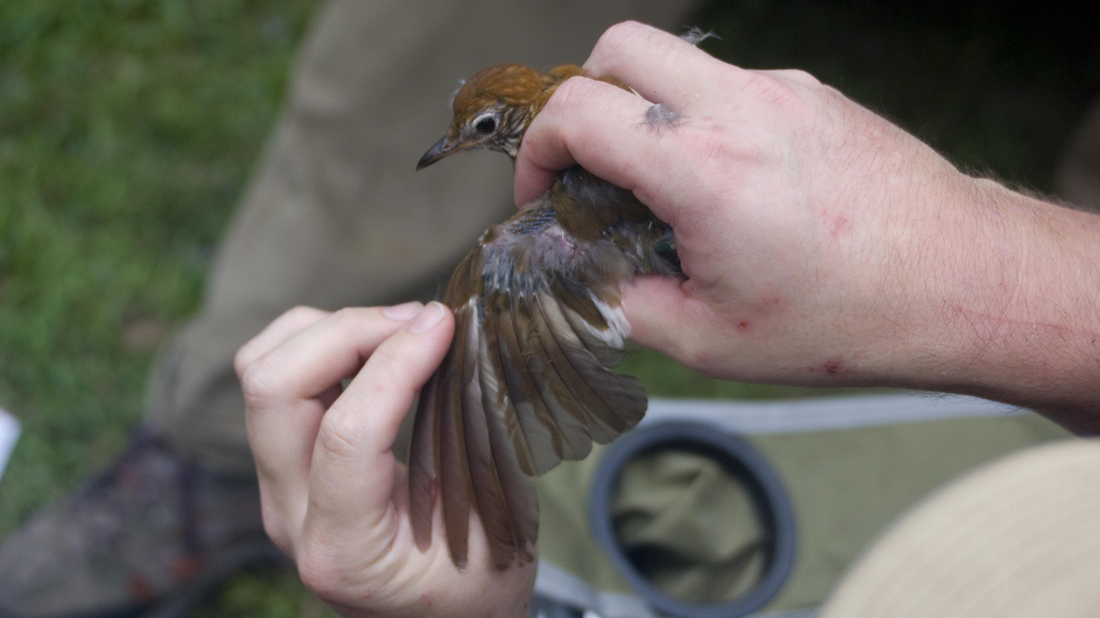
Is molt a time of misery for wild birds? We can’t be sure, but it is certainly a time of compromised abilities.
The wood thrush seem to compensate for these compromised abilities by becoming much more secretive. It isn’t easy to study hiding animal, so it’s no wonder that there aren’t more studies of bird behavior during this period.
Nonetheless, molt is a crucial time for birds. Additional research could help reveal unique requirements that birds might have for successfully moving through this stage of life.
For example, other studies of wood thrush and a few other species have shown that molting birds tend to occupy denser, younger forest compared with their nesting season habitat. This is perhaps a strategy to help them stay hidden during their compromised state.
Molt is a critical stage of a bird’s life. The peculiar behavior of Arnie the starling and wild wood thrushes may ultimately translate to enhanced survival as they cope with compromised abilities.
Although estimates of survival rate of birds during molt are scarce, it’s clear from Rivera’s observations that wood thrush during molt would have a difficult time evading predators. A bird’s strongest defense may be choosing a safe habitat.
The fact that birds may be using distinct habitats during molt highlight the conservation value of studying molting birds.
We are aware of the need to protect and manage nesting habitat, stopover habitat, and wintering habitat for migratory birds, but we may also need to give attention to “molting habitat” to maintain bird populations.
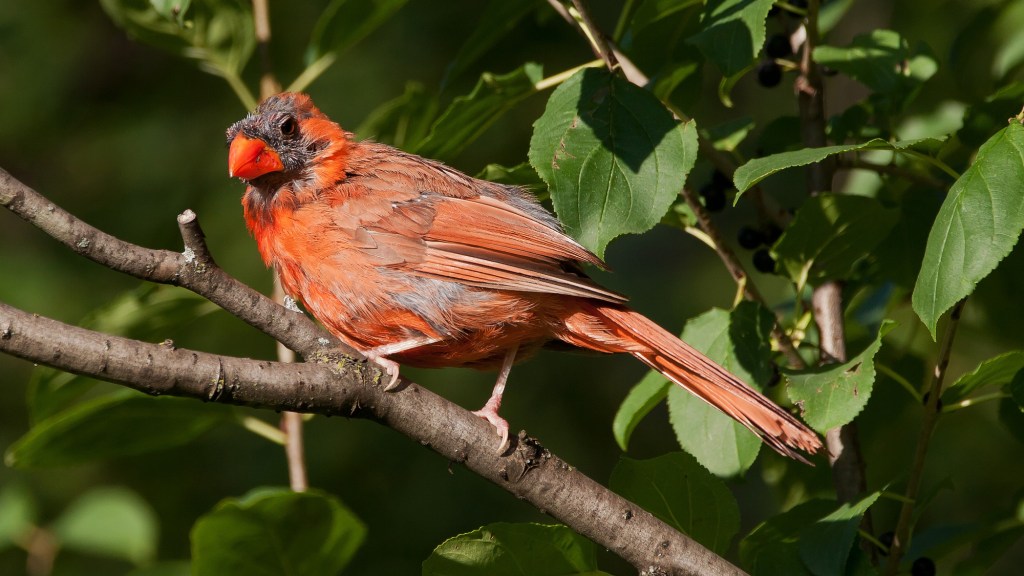



My parakeet could not fly during a hard molt and retreated to a perch. His “brother” parakeet just sat with him babysitting. I thought he was sick and dying. He never stopped preening, however. After a week or so, he regained his strength, started eating again and seemed back to his old self!
My male adult Cockatiel has been molting for about a month. I have noticed the personality changes seem to come during molting. He had gotten to the point of not even coming down from his perch to eat or drink, so I began looking for ways to bring the food to him. I make sure that there is plenty of millet throughout his cage so that if I am not here, he will have food. I also put a water container near his perch.
At first I believed that he was ill and took him to the vet This stressed him terribly.
Since I read this article, I feel that this is what is going on with him as he seems to have a lot of the personality traits described in this article.
Thanks for this information. I found it to be very helpful.
Interesting reading.
My Cockatiel acts totally different during molting. I couldn’t figure out what was going on with him until I started noting that his behavior changes always seemed to come when molting time came. Sometimes he doesn’t even want to leave his perch to eat or drink.
I even took him to the vet who said he believed he had respiratory problems & gave him a shot of antibiotics. The trip to the vet stressed him terrible.
Thanks for the information on this. It has been very helpful.
My parakeet is going threw a a severe molt. Pin feathers all over face and back and chin and she is miserable. She barely moves around. Poor girl looks so scruffy. She goes threw this at least three times a year.
So helpful! Thank you.
Parrots are in pain when they lose their feathers. Always thank them for their feathers and tell him or her how beautiful they are and your feathered friend will be just fine. Tell them you love them very much.
I am at my northern Michigan river cottage where the robins, rose breasted grosbeaks, and who knows what other birds are skulking in the foliage, lurching from their hideaways to sulkily grap a berry here or there. This really helps me explain the absence of my house guests, which have been blaming it on global warming
Very interesting article! I never even thought that birds might get angry but your article showed me the whys of why they might. It must be quite difficult to study such a topic as anger in birds.
I have many rescue and rehab exotic birds, and can attest to molting time; you can especially see it with the Cockatoos; I know when pin feathers are coming in, by their behavior; like babies teething; they are grumpy and irritable (potentially bitey), preferring to be left alone; once the blood in feather recedes, they are more than happy to have their feathers (especially head) groomed. Chamomile works, as well as lavender. Thank you for this article.
Loved the video of the starling. Thought I knew a lot about birds but I never knew a starling could talk! My question is about molting. When do birds typically molt? We found a mourning dove on the ground and noticed that it could not fly, watched it for a couple days and then decided we would take it to a nature rehabilitation facility because we were afraid the feral cats would get it. Now I am wondering if it was really injured or could not fly because of molting. Any comments or ideas?
It would be interesting to design a study using urban chicken-keepers to observe the molting patterns and related behavior of their small flocks. Unlike factory birds, small backyard flocks are usually allowed outside, experience natural light and weather patterns, enjoy adequate space, appropriate feed and forage and normal social opportunities but at the same time they are in a safe, controlled environment, accustomed to humans, and easily observable. Also, many small flock keepers know their birds’ individual personalities–yes, they have individual personalities as well as a social structure, most commonly known as the “pecking order,” but actually much richer and more complex than just a hierarchy of feeding and roosting behavior. It would be fun to participate in such a study and I’d bet many members of various chicken-afficianado groups would be glad to do it. My girls are so hand-tame that I can easily pick them up and inspect their growing feather shafts, which I find fascinating, especially how quickly they push out their gorgeous new feathers through the hollow tubes. And I definitely notice personality changes. I’d be happy to recruit members of my chicken group, Philadelphia Backyard Chickens (over 650 member households) to do a fun and educational project.
I was quite taken with Arnie and his fascinating repertoire. (I cracked up every time he interrupted a string of sweet nothings to utter “Worms. Worms. Worms”. I may take thatI up myself.) I wish there had been a video of him during molt for comparison. I used to keep chickens and can attest to the crankiness during most (though sometimes with chickens it can be hard to tell about crankiness).
I’d noticed that my bird-friendly yard became noticably quieter after nesting season and before migration, but didn’t understand the dynamics, other than perhaps with nestlings out, they sought out fresh territory. I guess in one sense I was right, but didn’t recognize the role molting played in this. There is a large brushy area in back of my house, the center of an overlarge village block, and I think that is where they are going.
If I were younger, I think I would like to do a small research study to find out.
This article explains the cardinal at the foot of my pole feeder the other day. I thought him challenged and went outside to see if he needed help. His plumage was a mess and he flopped around and fluttered into bushes near by. Later he was back again and I let him be. Unfortunately he was plucked up by a hawk, and I felt terrible.
Yes so interesting and I’ve seen Midwestern bluejays and cardinals in this stage and at first experience with this visualization I thought them to actually be embarrassed alone and sickly and shunned by their community. They had bald heads without their top knot gloriful crown and motley plumage and I thought oh dear some strange mite disease. They were choppy illusive and loners quiet and again appeared embarrassed to the feeder and away fast like oh I’m so ugly and tired please look away. I finally after a few years realized what was up and that it was a stage of molting process but did not really think about the behavior side of this phenomenon till your extremely interesting informative articulate article. Thank you for sharing your expertise. By the way Arnie is an absolutely perfect name for that little starling. I have new appreciation for this species due to the observations and love his caretaker had for him. Also starlings are so interesting when in a flock of thousands and they are in synchronization in flight doing wave patterns seemingly for fun. How on earth do they communicate across the skies with such precision? Saw some ravens riding air currents at Grand Canyon at sundown in updraft with rapid temperature change ( dive bombing then hang gliding upward). Seen crows in Missouri riding on the high winds seemingly for fun and play. Just wanted to share with someone who might be interested. Thanks. Keep up the fun work.
I wonder about two things:
The starling molt could have corresponded with hormonal changes as the starling became an adult. So it sounds like they are possibly awkward like human teens.
Since molt happens every year, I wonder how it relates biologically with the birds preparing for either a long winter (hibernation in bears–aren’t they cranky?) OR perhaps it is hormonal like a woman having her cycle–only for both sexes.
Ok-3rd question: is molting the same phenom for males as for demales?